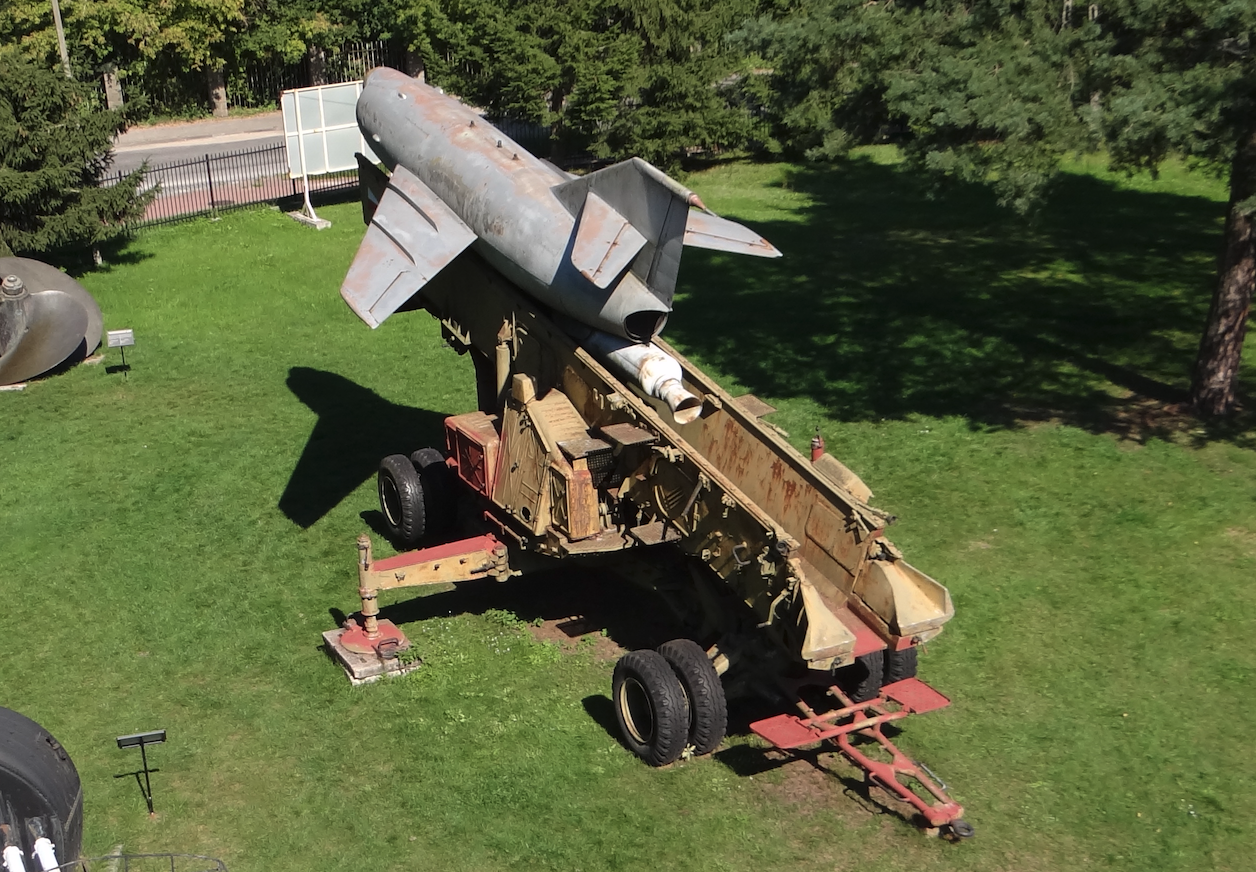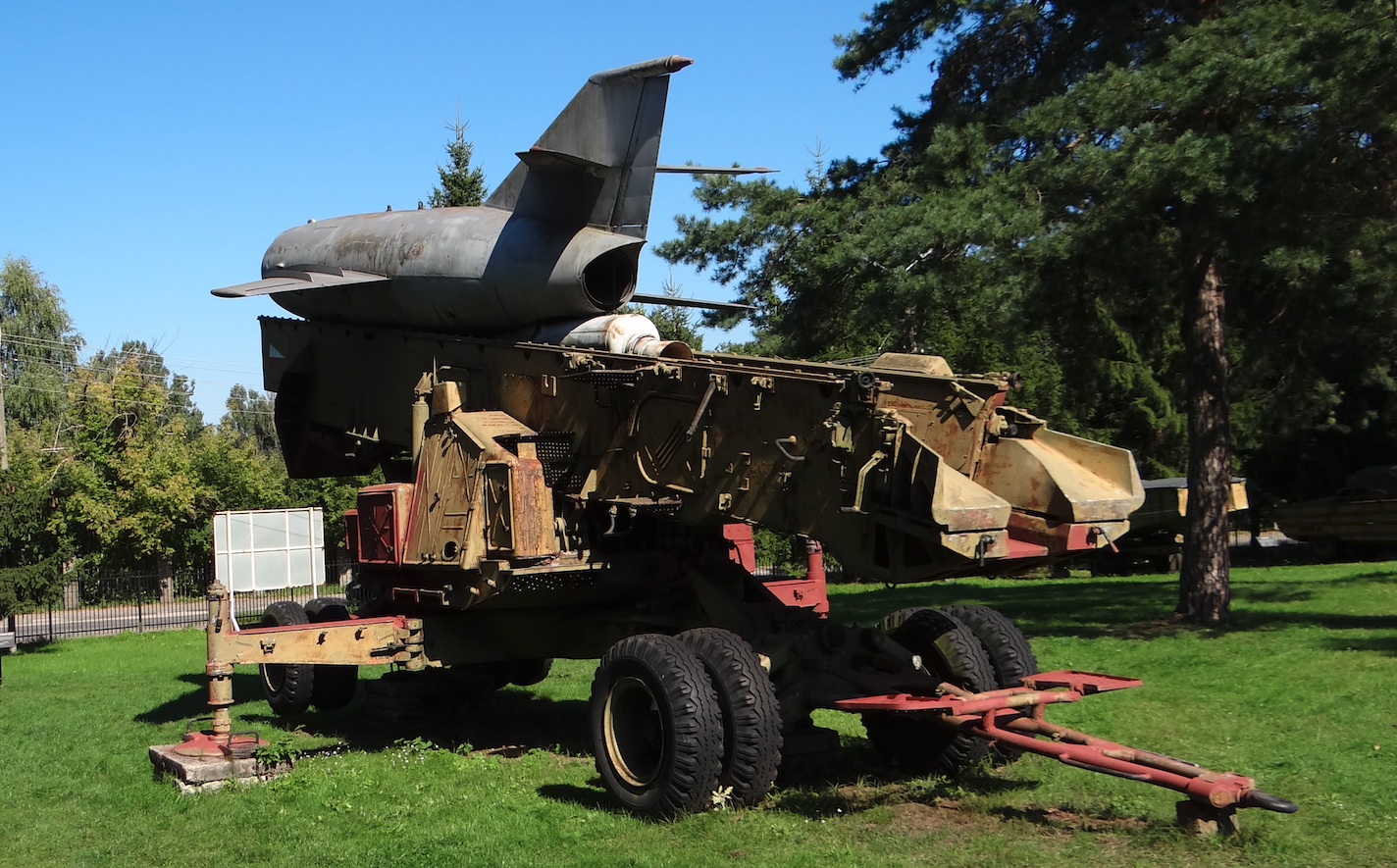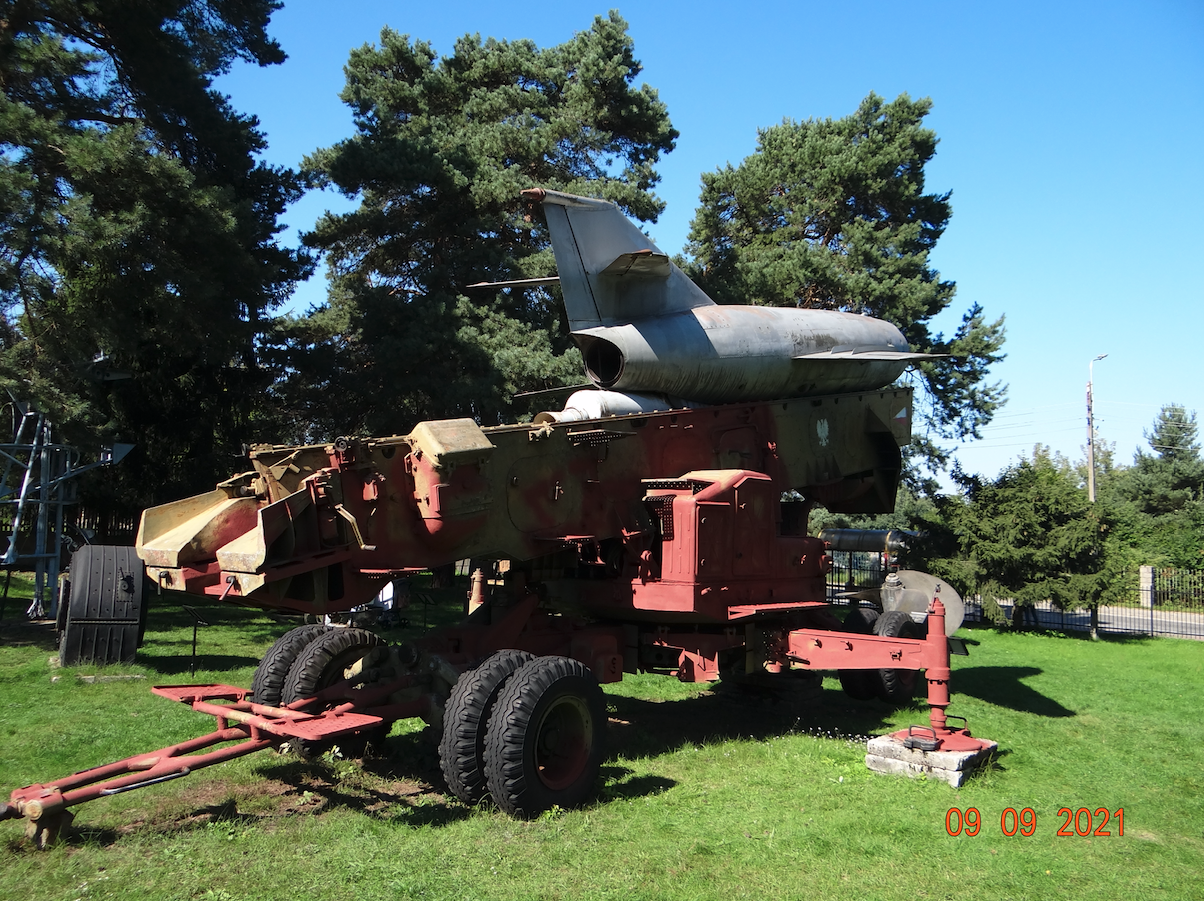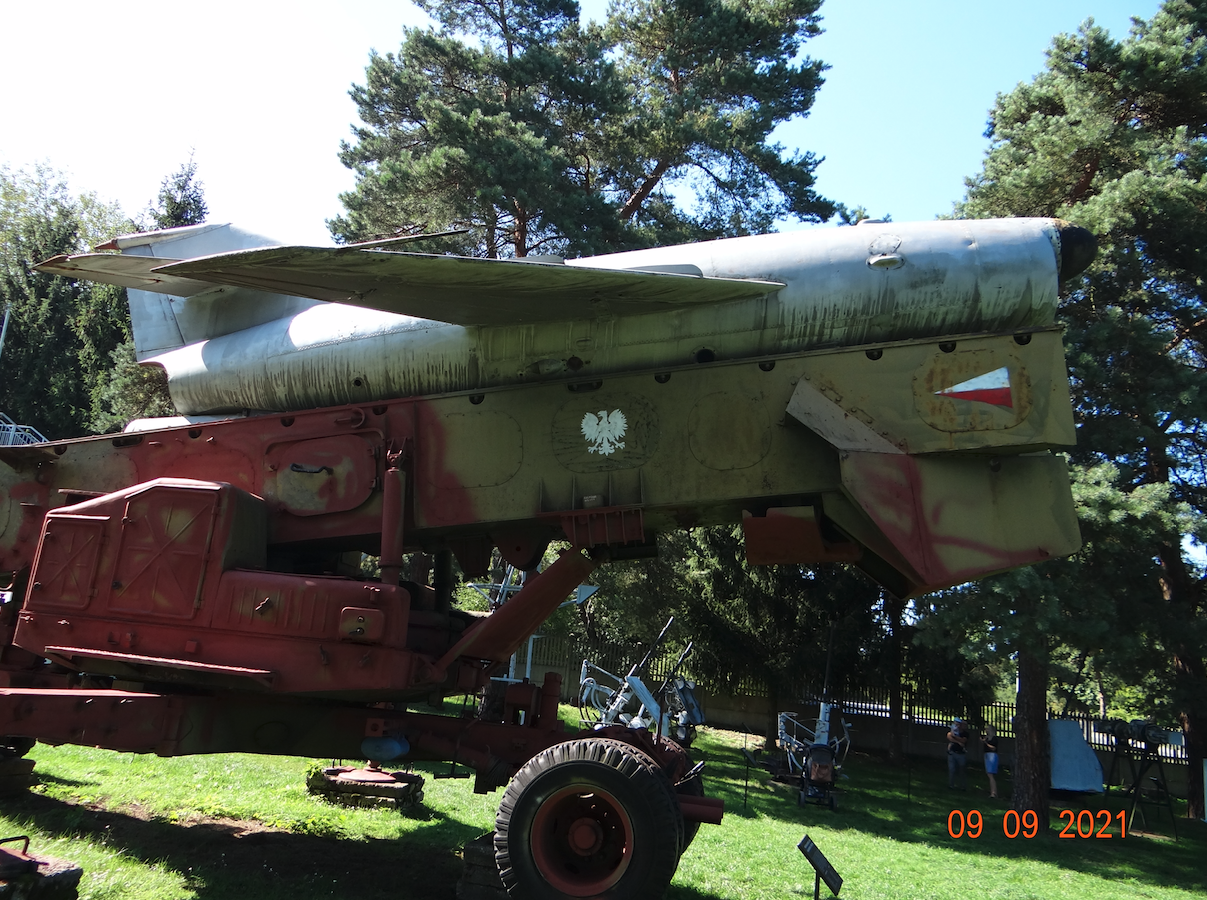Kraków 2021-09-30
S-2 Sopka (4K87).
"S-2 Sopka" is a Russian air-to-water and ground-water anti-ship missile. Other designations of the missile are KS-2, 4K87, which were assigned by design offices. In CCCP "S-2 Sopka" it was the first complex of a heavy air-water missile class and the first complex of coastal defense against enemy ships.
Work on the complex began in 1949 in connection with the decision made during the Kremlin conference in the presence of Joseph Stalin. The starting base of the complex was the Крылатый Снаряд KC (KS) Kommet’s winged missile, which had been developed since 1945.
The design of the missile airframe was commissioned to the OKB-155 Mikojan and Guriewicz (MiG) design bureau. Therefore, the missile looks like a fighter plane from the late 40s. The missile received a slender fuselage, which housed the R-500 turbojet engine, the same as the Yakovlev Yak-23 and Lavochkin La-15 aircraft. The engine thrust is 15 kN. The wings were oblique, with a bevel of the leading edge of 57.5 degrees. The wings were equipped with ailerons and two pairs of aerodynamic blades. The tail is cross-shaped and has a low height. This was due to the possibility of firing missiles suspended under the wings of the bomber carrier, so that the missile, after being detached from the catch, would not hit the plane with its tail. The air intake to the engine is at the front of the fuselage, and in its upper part there is a protruding shield of the radar station. The gas outlet is located under the tail. The missile has no wheeled undercarriage. However, it has a hitch for the starter engine. The role of the landing gear is full of slides, attached to the airframe, which move in the launcher guides.
The steering system was developed in the KB-1 design office. In the first phase of flight, the missile is remotely guided in a radar guiding beam sent by the carrier aircraft or the ground control station. In the final phase of flight, the missile guided itself in a semi-active manner or at a source of thermal radiation.
Air-water missile tests were carried out with the Tupolev Tu-4 aircraft. The missile entered service with the Tupolev Tu-16 bombers in 1953 as 4K87.
In 1952, tests of the launch of a missile from a ground launcher began. It was necessary to use an auxiliary solid fuel starter engine. This is how the ground version of the coastal defense was created. The entire complex includes: missile, launchers, transport and loading cars, command post and radar stations. The missile guidance system was based on the same principle as in the aviation version of the KS. The missile is fired from a single-site launcher that can be transported. The first "Mys" radar observes the sky around looking for a target. The second "Burun" radar works out the parameters of the missile’s flight path. The S-1M radar was used to guide the missiles. The radar sends a narrow radio beam, which, when reflected from the target, goes to the receiving antenna in the missile. The missile flies at a height of up to 400 m from the surface using the radio altimeter, which is part of the autopilot. In the final phase of the flight, when the passive missile radar (designated S-3) receives a sufficiently strong echo from the target, the missile directs itself at the target. The missile is equipped with a proximity fuse, shock fuse, and a self-destruction system. The projectile can also be visually aimed at the target. The flight direction commands are sent to the autopilot. The system was very extensive and required good weather and a good teamwork of all soldiers. The complex was designated KS-2 and was put into service in 1955.
The disadvantage of the steering system was that it was highly susceptible to interference. This drawback was partially rectified in 1959 by using infrared (heat source) guidance at the end of flight.
The missile range, which was 95 km, seemed to be sufficient, but it must be remembered that the radar set on the seashore will not detect the ship at a distance of more than 50 km, because the ship is hidden behind the horizon line of the earth.
The S-2 Sopka missile system arrived in Poland in 1963. The system was introduced as a test system in the form of only two launchers. He was assigned to the state of the 9th Coastal Artillery Squadron in Ustka. Even then, the system was outdated, difficult to use and ineffective. The first shooting took place on May 11, 1964. The last exercise was carried out in 1971 at the CCCP. In 1975, the system was removed from the state and transferred to museums in Gdynia and Skarżysko-Kamienna. But the "S-2 Sopka" complex played an important propaganda role. Almost every military publication featured photos of the "S-2 Sopka" system, which was to prove that the Polish People’s Army was well prepared to defend itself against a hostile sea attack.
S-2 missile (KS-2).
Span 4.72 m. Length 8.48 m. Height 2.05 m. Fuselage diameter 1.09 m. Take-off weight 3,419 kg. Maximum speed 1 050 km / h. 95 kg range. The warhead weighs 1 010 kg, including 860 kg of explosive material. The missile required refueling before take-off (aviation kerosene).
B-163 launcher (W-163).
The launcher is a steel structure based on a chassis equipped with four twin wheels and a hitch for towing a truck. The launcher itself is single-guide, i.e. it has only one launch stand. The launcher can be lowered to the transport position or raised to the launch position. The elevation angle is 10 degrees. The launcher is horizontally rotating up to 174 degrees. The missile can be transported on a launcher or with a transport and loading vehicle or on a PR-15 semi-trailer. The projectile was pulled onto the launcher by means of a steel rope and pulleys, either manually or electrically. Loading took about 20 – 30 minutes. Preparing the missile for take-off took 17-25 minutes. At that time, the turbojet engine was started, which had to achieve the appropriate speed and temperature. An additional solid fuel starter engine is attached to the missile, which automatically separates when the fuel is exhausted.
Missile squadron.
The missile squadron included the "Mys" radar station and two batteries with two launchers each. The squadron was in stock with 8 missiles. Each battery included the "Burun" and S-1M radar station, four PR-15 loading trailers with tractors. In addition, there were vehicles and kennels with pre-take-off control posts, electric power generators, control equipment and a command post.
Written by Karol Placha Hetman




